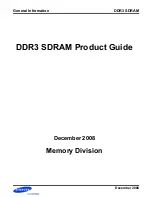
66
ASUS SpaceLink WL-100 WLAN PC Card
Chapter 5 - Glossary
Chapter 5
IEEE 802.11
IEEE 802.xx is a set of specifications for LANs from the Institute of Elec-
trical and Electronic Engineers (IEEE). Most wired networks conform to
802.3, the specification for CSMA/CD based Ethernet networks or 802.5,
the specification for token ring networks. 802.11 defines the standard for
wireless LANs encompassing three incompatible (non-interoperable) tech-
nologies: Frequency Hopping Spread Spectrum (FHSS), Direct Sequence
Spread Spectrum (DSSS), and Infrared. 802.11 specifies a carrier sense
media access control and physical layer specifications for 1 and 2 Mbps
wireless LANs.
IEEE 802.11b
802.11b specifies a carrier sense media access control and physical layer
specifications for 5.5 and 11 Mbps wireless LANs.
Infrastructure
A wireless network centered about an access point. In this environment,
the access point not only provides communication with the wired network
but also mediates wireless network traffic in the immediate neighborhood.
IP (Internet Protocol)
The TCP/IP standard protocol that defines the IP datagram as the unit of
information passed across an Internet and provides the basis for
connectionless packet delivery service. IP includes the ICMP control and
error message protocol as an integral part. It provides the functional equiva-
lent of ISO OSI Network Services.
IP Address
An IP address is a 32-bit number that identifies each sender or receiver of
information that is sent across the Internet. An IP address has two parts: the
identifier of a particular network on the Internet and an identifier of the
particular device (which can be a server or a workstation) within that net-
work.
ISM Bands (Industrial, Scientific, and Medicine Bands)
Radio frequency bands that the Federal Communications Commission
(FCC) authorized for wireless LANs. The ISM bands are located at 902
MHz, 2.400 GHz, and 5.7 GHz.



































